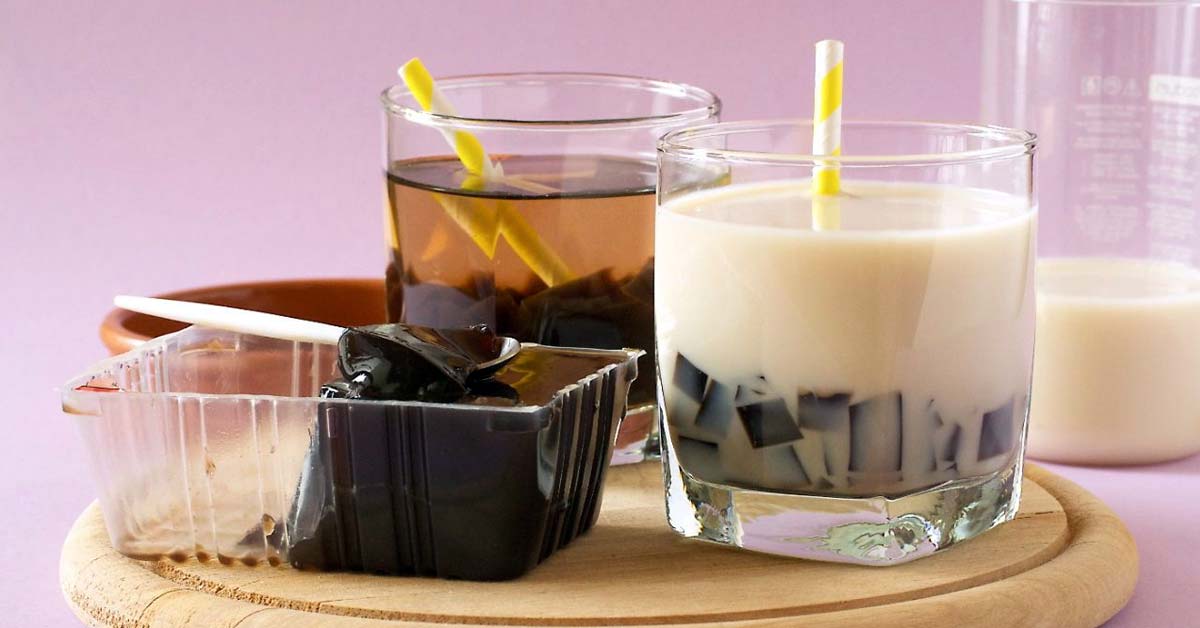Jelly drinks are popular food products for all age groups and are sources of carbohydrates, such as sugars, fibers and other components. Jelly drinks can be categorized as functional foods because of their health benefits. They usually have attractive colors that make the drink more desirable to consumers. Thus, the best dyes for food products are natural dyes. In addition to their function of making products more attractive, natural dyes are a source of bio compatible components that function as antioxidants1.
The natural dyes such as; anthocyanins, carotenoids, chlorophyll and betacyanin are derived from plants or animals. Natural dyes have been used in the food industry, but as technology develops, the use of synthetic dyes is also growing. Synthetic dyes are easier to obtain cheaply and many food manufacturers use these synthetic dyes to reduce production costs. However, the use of synthetic dyes is bad for human health1.
Researchers of indonesia selected four native plants and used them as a natural dye to be used in jelly drinks. The selected plants were; Archidendron Pauciflorum (jengkol), Syzygium Oleana (pucuk merah), Mangifera Indica (mango),Theobroma Cacao (cocoa tree) and Cinnamomum burmannii (indonesian cinnamon). The plants were selected due to their various benefits, and presence of many important constituents2, 3.
Jelly drinks are made of a gel-shaped liquid product that is easily aspirated is chewy and can be consumed to delay hunger. Gels can be formed through formation of the junction zone by hydrocolloids along with sugars and acids. Before their application in jelly drinks, the antioxidant activity of the young leaves is measured at various incubation times.
Therefore, a new purpose study was performed to evaluate the antioxidant activity, total polyphenols and anthocyanin content in A. Pauciflorum, S. Oleana, M. Indica, T. Cacao and C. Burmannii young leaf extracts as well as their use in making jelly drinks4.
The study uncovered the potential for young leaves with red pigments to be used as colourants, which can be beneficial to increase the functional benefits of the plant in its application in food products. The results of this study showed that the antioxidant activity and total polyphenol content of A. Pauciflora commonly known as jengkol were the highest among the young leaves in both extracts and jelly drinks.
Keywords:
Antioxidant, jelly drink, natural dyes, red pigment, young leaves, jengkol, mango, Archidendron Pauciflorum (jengkol), Syzygium Oleana (pucuk merah), Mangifera Indica (mango), Theobroma Cacao (cocoa tree) and Cinnamomum burmannii (indonesian cinnamon).
References:
- Pivtsaev, A.A. and V.I. Razov, 2016. Detection of the carcinogenic properties of synthetic and natural dyes using positron annihilation lifetime spectrometry. Res., 5: 1306-1308.
- Anggraini, T., 2017. Antioxidant activity of Syzygium oleana. J. Nutr., 16: 605-611.
- Hii, C.L., C.L. Law, S. Suzannah, Misnawi and M. Cloke, 2009. Polyphenols in cocoa (Theobroma cacao). Asian J. Food Agro-Ind., 2: 702-722.
- Anggraini, T., Novendra, V. and Novelina, 2018. Antioxidant Activity of Archidendron pauciflorum, Syzygium oleana, Mangifera indica, Theobroma cacao and Cinnamomum burmannii Young Leaves and Their Application as Jelly Drink Colourants. J.Nutr., 17: 492-499.


COMMENTS